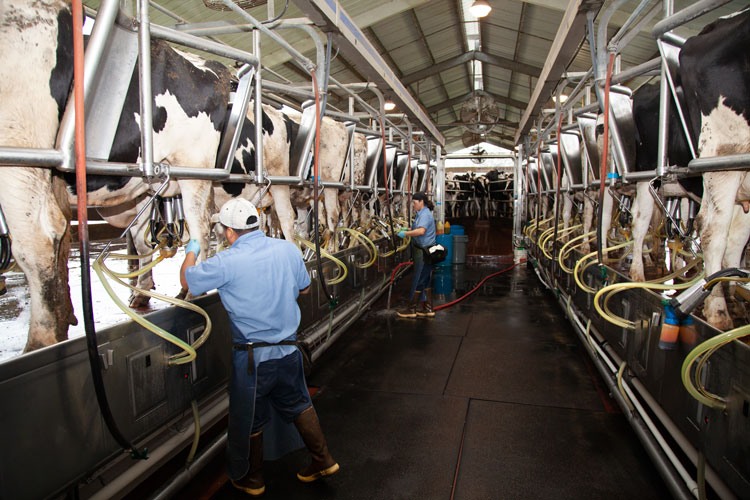
For years, it has been a very common practice for farms to treat all cows with antibiotics at the first sign of mastitis. Over time, the necessity of that immediate treatment has come into question.
Cornell University’s Daryl Nydam, D.V.M., talked about making pathogen-based treatment decisions for clinical mastitis at the American Association of Bovine Practitioners (AABP) annual meeting in St. Louis, Mo.
“Not all cows should or need to be treated,” Nydam said. He shared that 85 percent of mastitis cases are mild or moderate and can wait to be treated until diagnostic results are available.
“In those mild or moderate cases, if we wait 24 hours to start therapy, it does not appear to impact bioeconomic outcomes,” he explained.
The reason some cases of mastitis don’t need to be treated is because the cow has already fought off the bacteria with its own immune system. Our visual forms of mastitis detection (bad milk, inflammation, and so forth) are a result of the immune response, not the act of infection, Nydam said.
To determine which cows to treat, Nydam said a farm must know what pathogens they are dealing with. This can be done through milk culturing, either with an on-farm set up, though a veterinarian, or by sending samples to a culturing laboratory.
The other 15 percent of cases are cows that are very sick and off feed. These cows should be treated immediately, and probably systemically, Nydam said.
Reasons behind selective treatment
Why should a farm consider treatment based on the pathogen rather than just treating every cow?
For starters, Nydam pointed out that selective treatment saves money on both antibiotic tubes and labor. He also said that it manages hospital pen cow density, which is positive.
Fewer treated cows also means a lower risk for antibiotic residues in the bulk tank. Nydam commended the industry for already doing an excellent job at this, and he said less treatment for mastitis would help keep this low.
He also noted the benefit of pleasing the “boogeyman;” this could be consumers, government, or activist organizations who oppose blanket treatment from fear of antimicrobial resistance. Nydam said pathogen-based treatment allows us to sell more milk, both by maintaining market access and keeping milk in the bulk tank.








